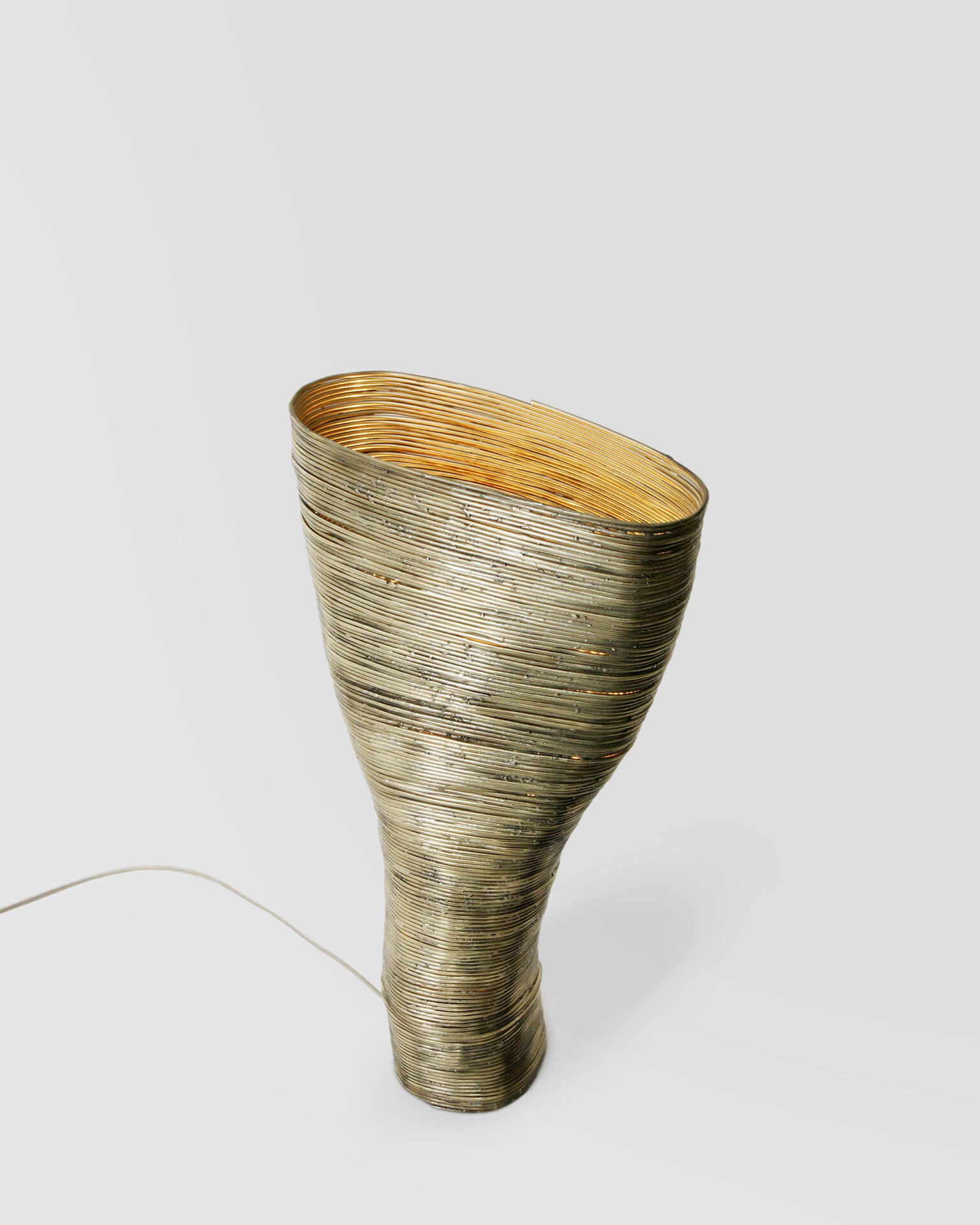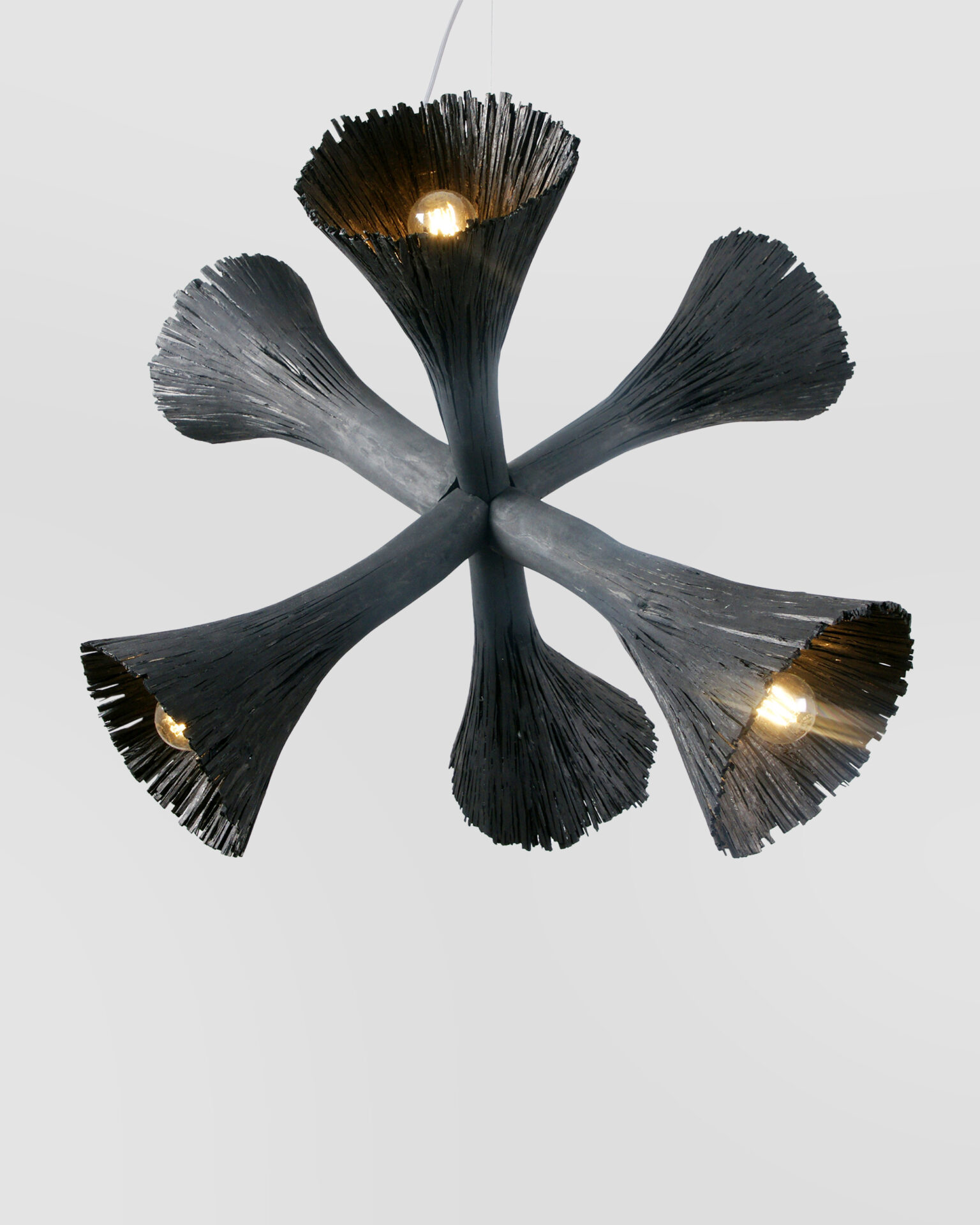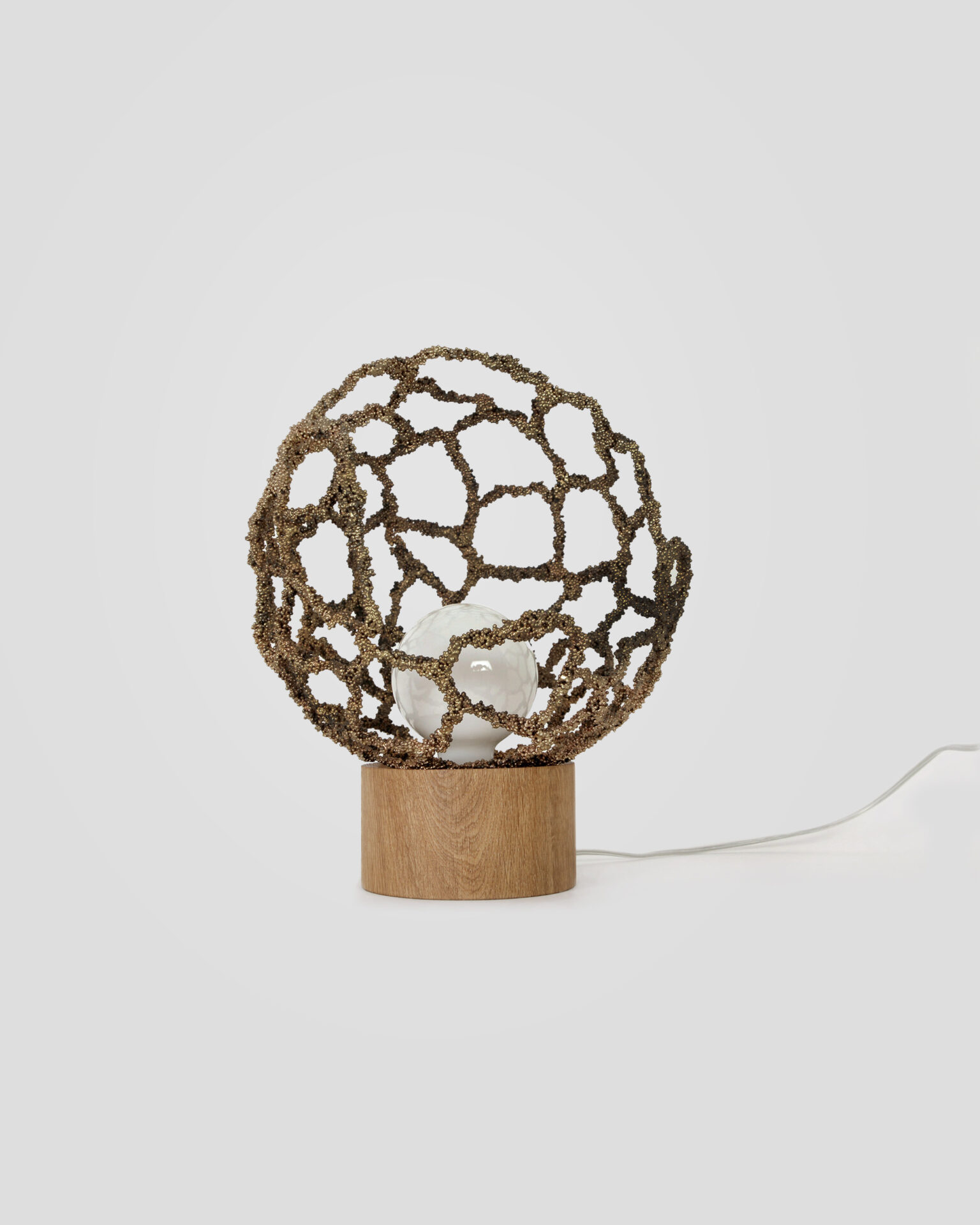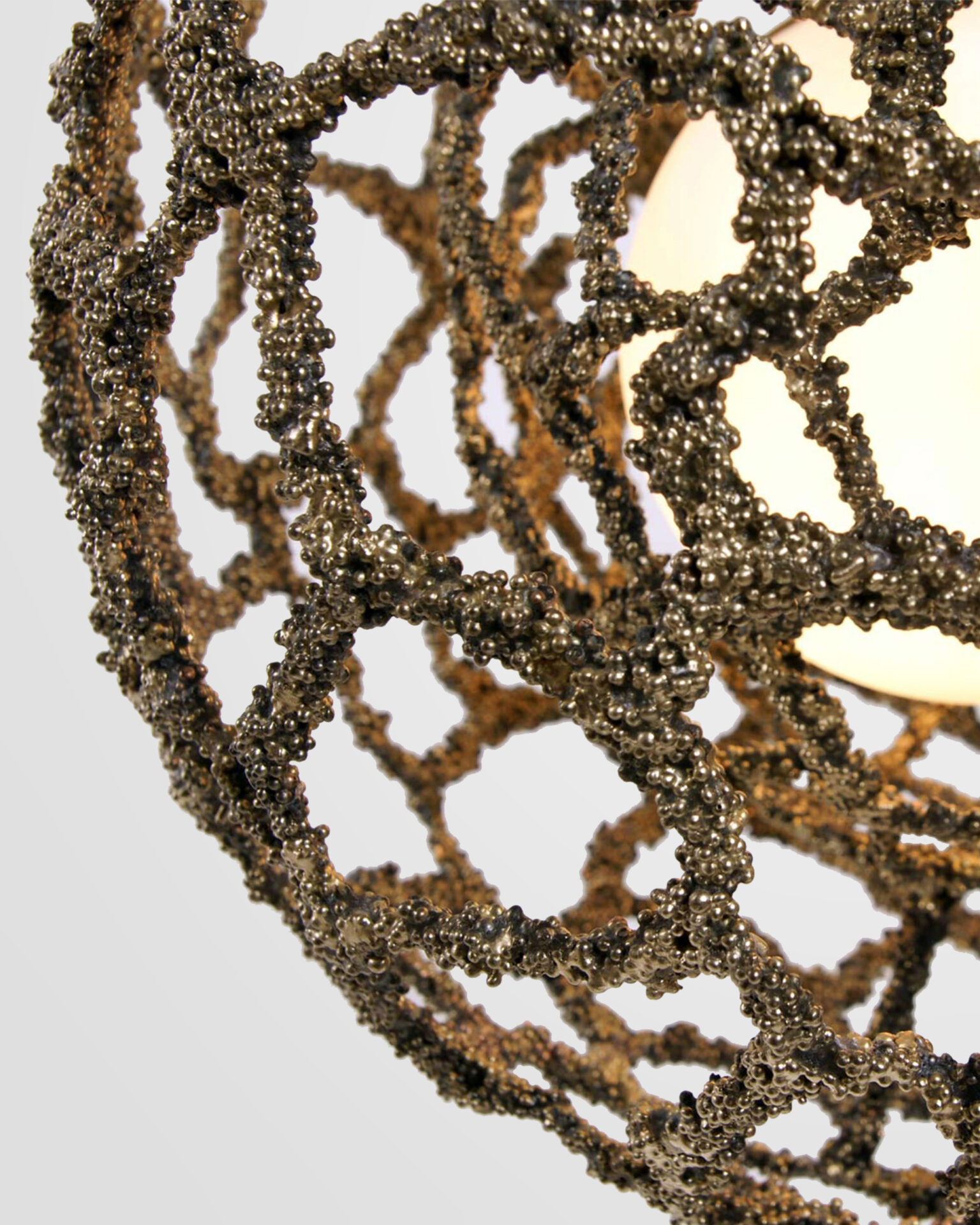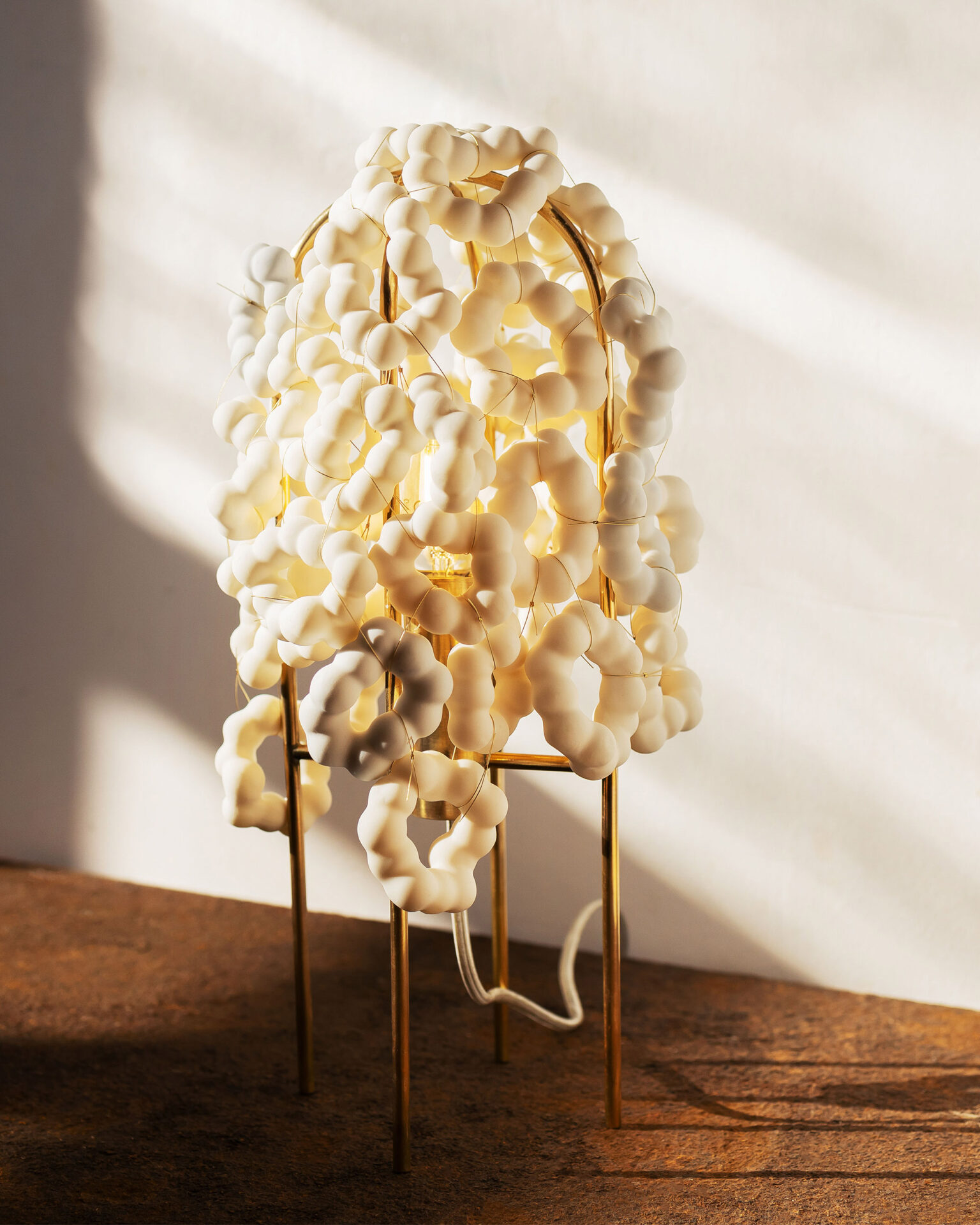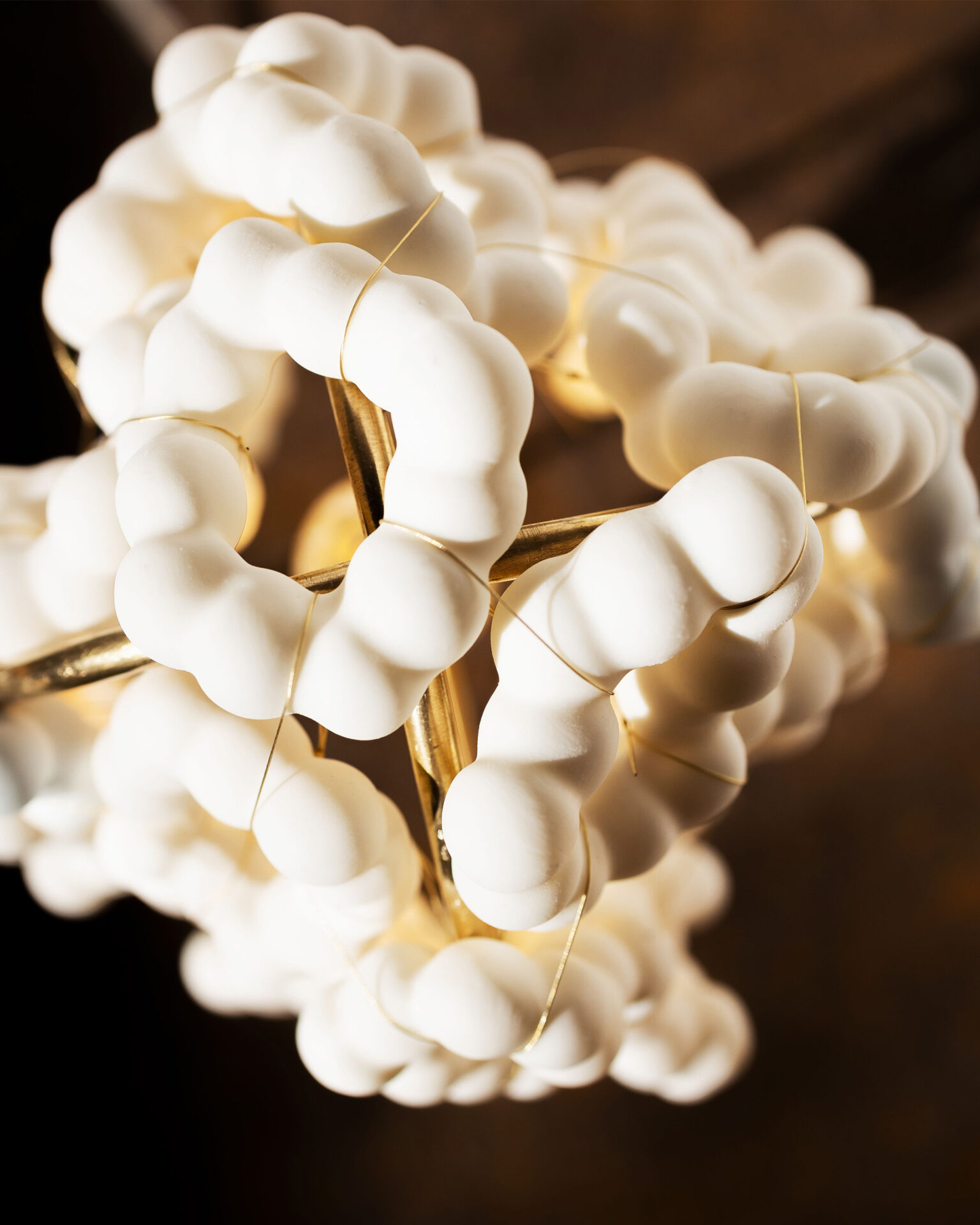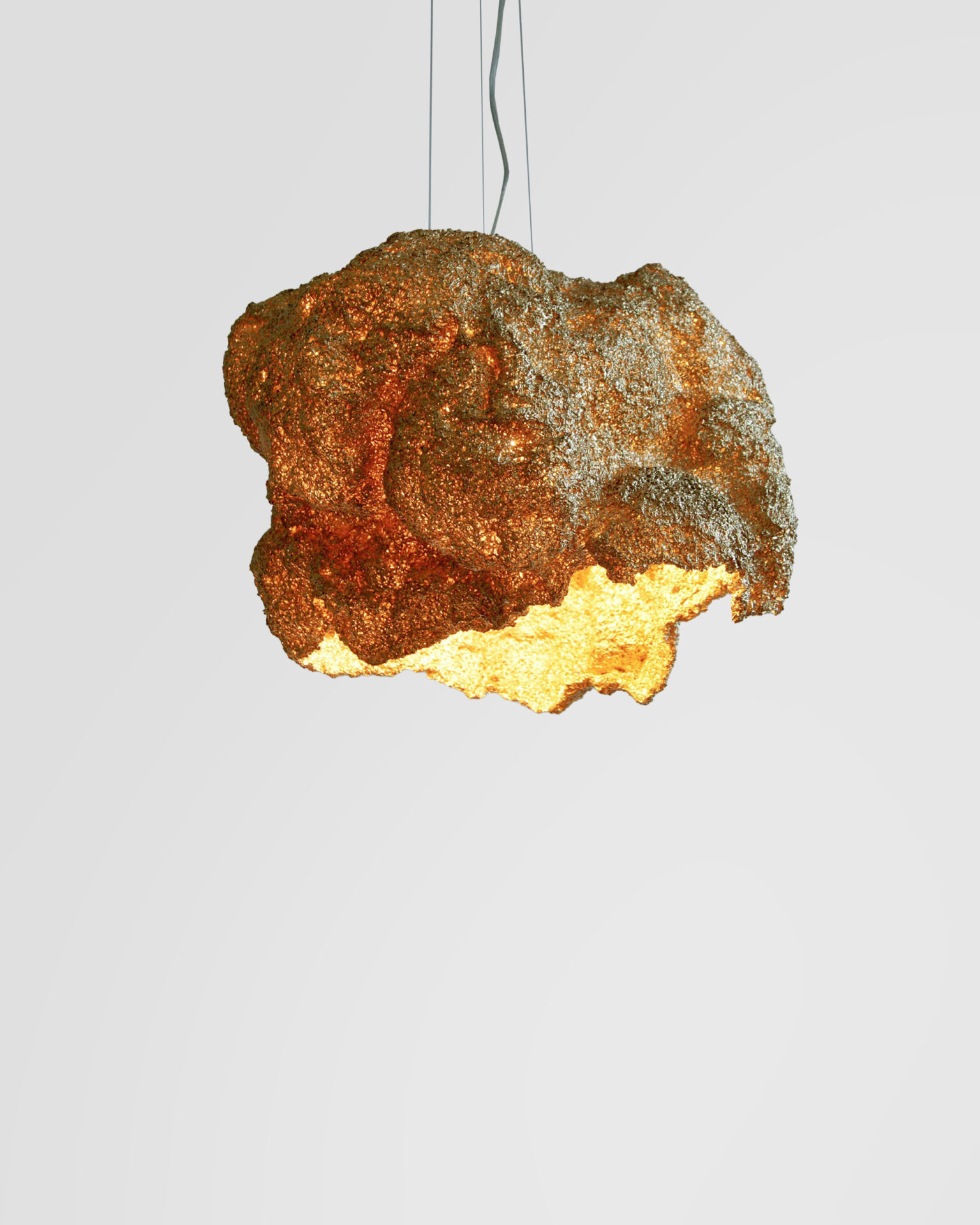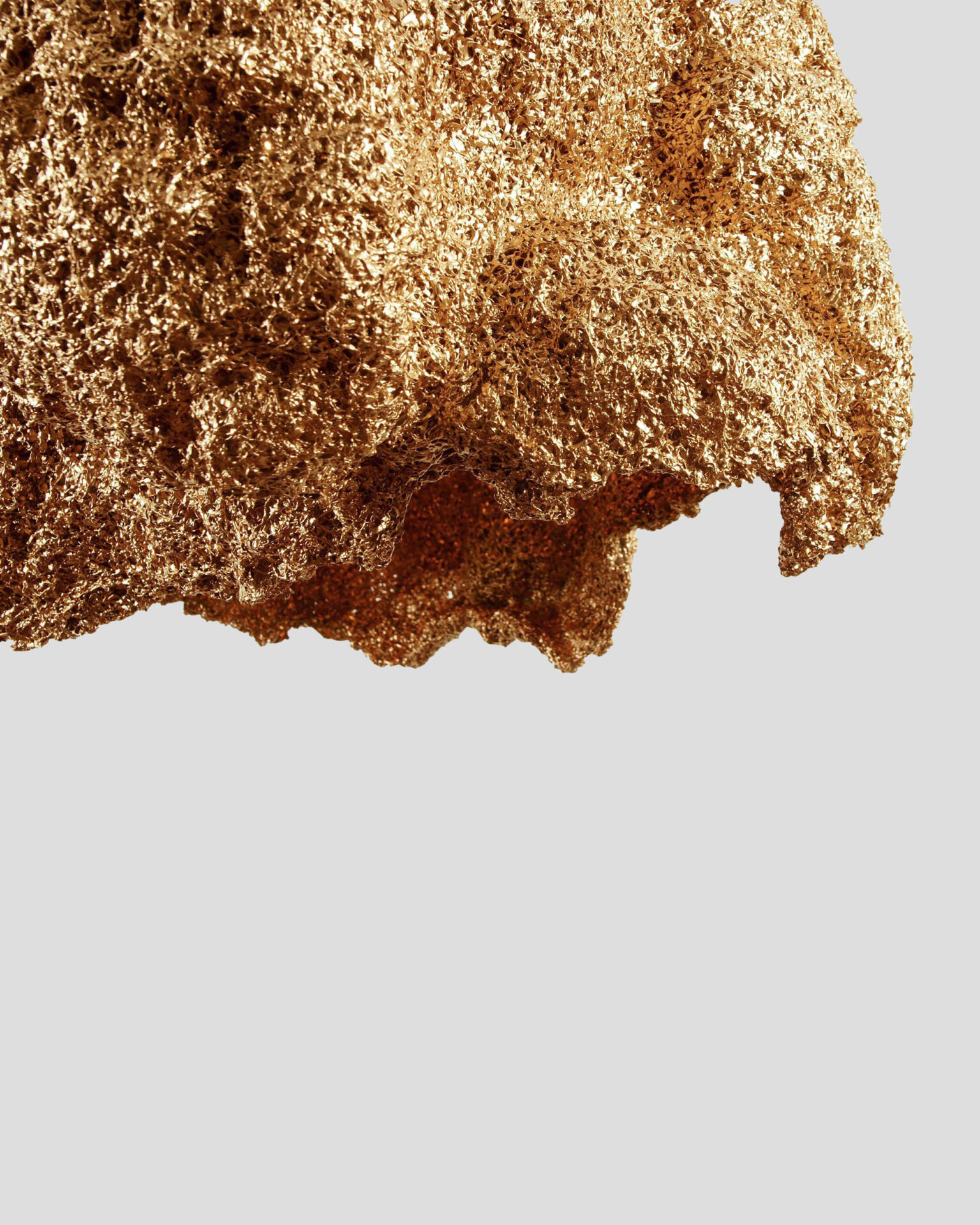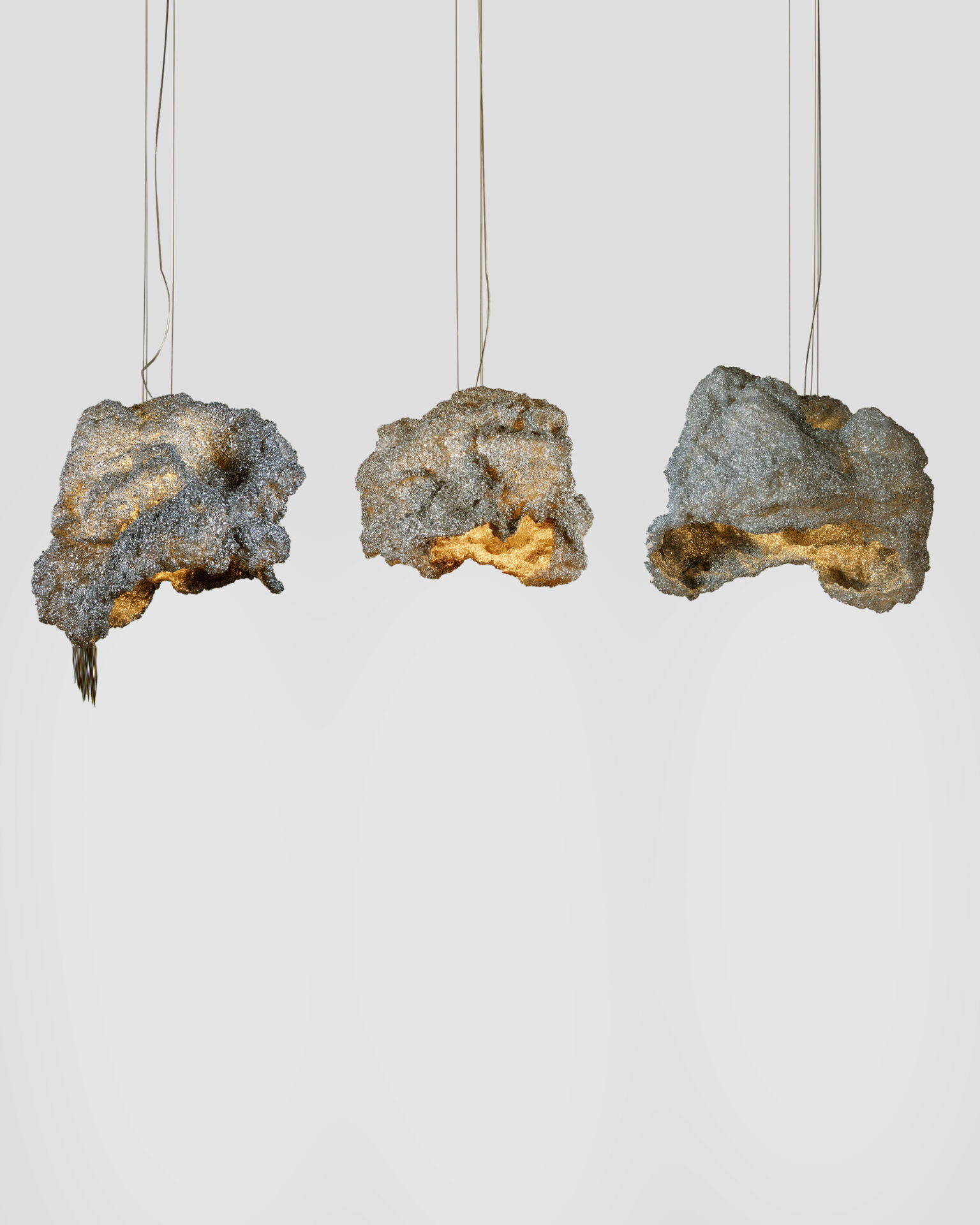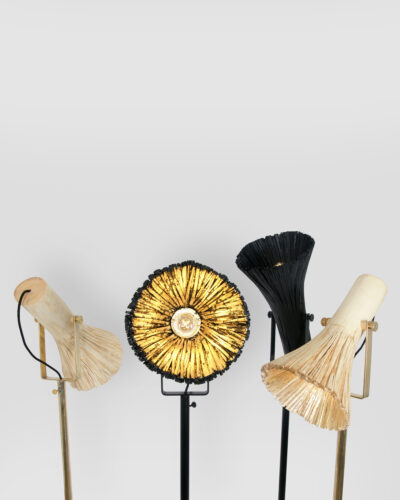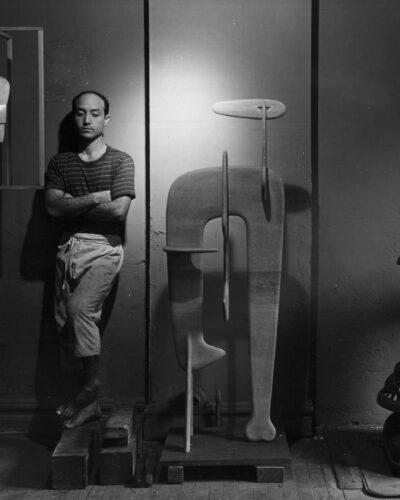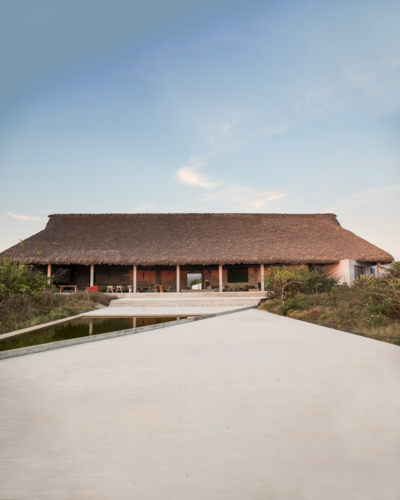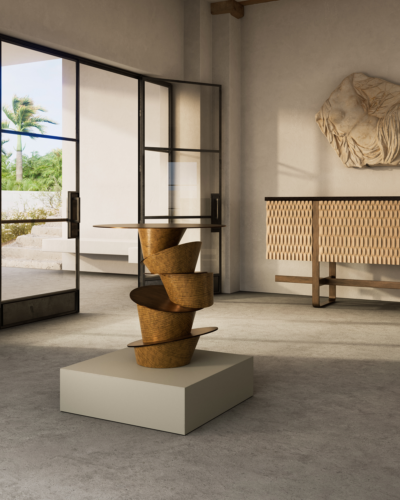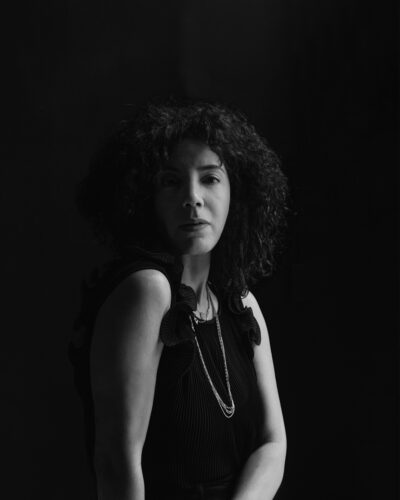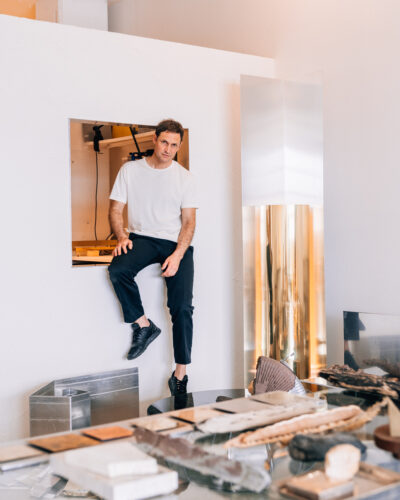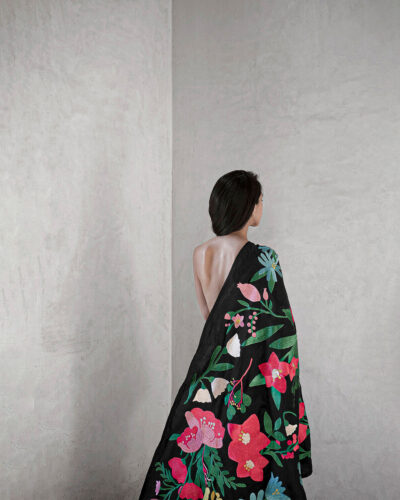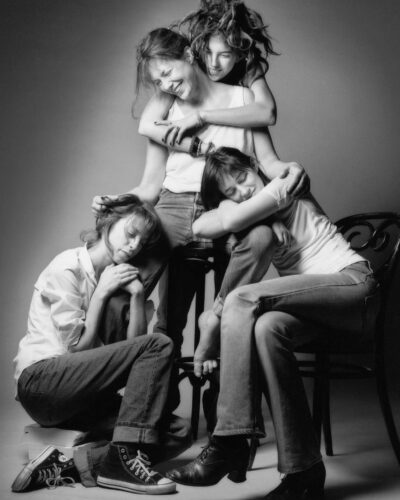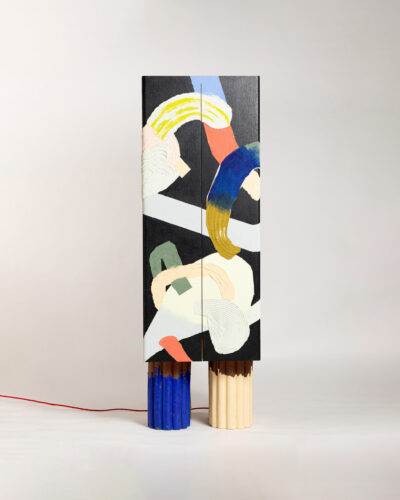This website uses cookies so that we can provide you with the best user experience possible. Cookie information is stored in your browser and performs functions such as recognising you when you return to our website and helping our team to understand which sections of the website you find most interesting and useful.
Listen to the conversation between Rosanna and Johannes Hemann.
“I am really interested and inspired by nature,” notes the designer, Johannes Hemann from his home in Allendorf, north-west Germany. “The forest is next door and so I spend a lot of my time there, I see how the trees are changing and growing – I study all of the details, trying to find an understanding that I translate into products and objects.”
Nature creeps into Hemann’s work both directly and indirectly – it is present in his choice of materials and textures, but also in his shapes and forms. The Wrap series traces the silhouettes of the tree branches that Hemann has collected; his pressed wood splinters and spreads, splayed out like a delicate trompêt mushroom; and the Core series has a distinctly underwater feel, reminiscent of seaweed and coral, or aged and barnacled surfaces.
Like many others, Hemann’s Core series is the result of his experiments with material and process, always in search of an interesting technique or an intriguing result. “I was experimenting with different metals – small particles that I could solder together – researching which materials I could use and which sizes they come in.” Deciding upon iron filings, Hemann applies heat, soldering the individual particles by hand to create a solid structure.
“I have control with the heat but the piece seems to grow by itself. I start to solder, joining each piece together, growing slowly … It’s a bit like a 3D printer, but in a more random way because I am the machine.” Through Hemann’s intervention, the hundreds and thousands of individual particles – similar to caviar in size and shape – seem to come together organically, evolving over time. Taking a variety of forms, and growing to grand proportions, the miniature pieces of metal form a cage, a protective shell, around the light that emanates from within.
“It always starts in the workshop, with the material – trying and failing”
Once again, the Akoya series explores the idea of the individual cell, a single atom or particle, which Hemann combines to create delicate compositions. Akoya – meaning ‘small ball’ in Japanese – is an intricate composition, where clusters of porcelain balls hang from a metal skeleton, held together with metal wire. “You can see it’s a similar starting point [to the Core series], where I have small parts that I try to grow – it’s like in nature, where things grow from small parts that connect to each other.”
Working with skilled craftsmen to produce each of the unique porcelain pieces, Hemann designs each composition by rolling hundreds of individual paper balls. “It was fascinating because, at first, you have only two bits, then three – and it keeps looking different [as the piece continues to grow]. Next, the porcelain craftsman dips these balls into liquid porcelain, and then they burn the paper that is inside each one, so that, in the end, it’s just the porcelain left.”
“If you can successfully translate your idea, that, for me, is the most beautiful moment.”
It could be said that Hemann designs processes rather than products, and, as a result, his objects tend to have a more free-form kind of beauty – each object imbued with the energy and dynamism of the organic world. As in nature, Hemann’s makes objects that are unique: made either by hand or a machine of his own making. “Material wise, I love to work with wood, but it always depends on the project and the objects, and what kind of material I can use for it. Sometimes I have a deeper look into the material, whether it’s metal, plastic, porcelain or wood – but sometimes I try to have a deeper understanding of the process, and then I’m very process driven and the second part is to see what kind of material I can use.
Verging towards the scientific, the Storm series also has its origins in the natural world, inspired by Hemann’s observations of the snow drifts that would form as they came into contact with static objects. To create these pieces Hemann devised his own artificial weather system – an empty container and a wind machine that can be adapted to produce each of the pieces in the series. “I can influence a few parameters – the direction of the wind, how big or small the starting point is, the heat, and the rate that I turn the object – but other than that it’s the Storm process that makes the final shape.”
“You have to find your way, and there’s lots of experiments before you come to a point where you can say you have a good result.” The series includes a table and a modernist armchair -however, the material that best suits Hemann’s Storm are the tiny polycarbonate shavings that he uses to form cloud-like light fixtures. Weightless and ephemeral, the lights hark back to the snow drifts that first inspired Hemann. Growing layer by layer, the pieces gradually acquire their shape as the airborne particles attach themselves to the ever-expanding mass. Part designer, part artist and part scientist, Hemann draws upon a number of different approaches to create designs that are as conceptual as they are practical, as intriguing as they are beautiful.
“All the products, objects and series never really come to an end, because I like to see how far I can go with it…”
The fluted metallic shapes of the Wrap series transform nature, abstracting and re-presenting it as contemporary sculpture. Immersed in the forest near his home in Allendorf, Hemann collects pieces of wood that he finds, gathering interesting formations and unusual shapes that he would wrap, enclosing their idiosyncratic forms within a metal cocoon.
As a designer and maker, Hemann has a strong affection for wood, which is evidenced not only in his Wrap series, but also in his pressed wood pieces. The series includes stools with bent wooden frames that have a charming wobbly quality, retaining the crooks, knots and burrs that give the wood its character. Made using a traditional wood bending technique, applying heat, steam and pressure to sculpt the wood into the desired shape, Hemann notes that, “Whilst this technique is really old, I have tried to make another language, to take a different approach to it.”
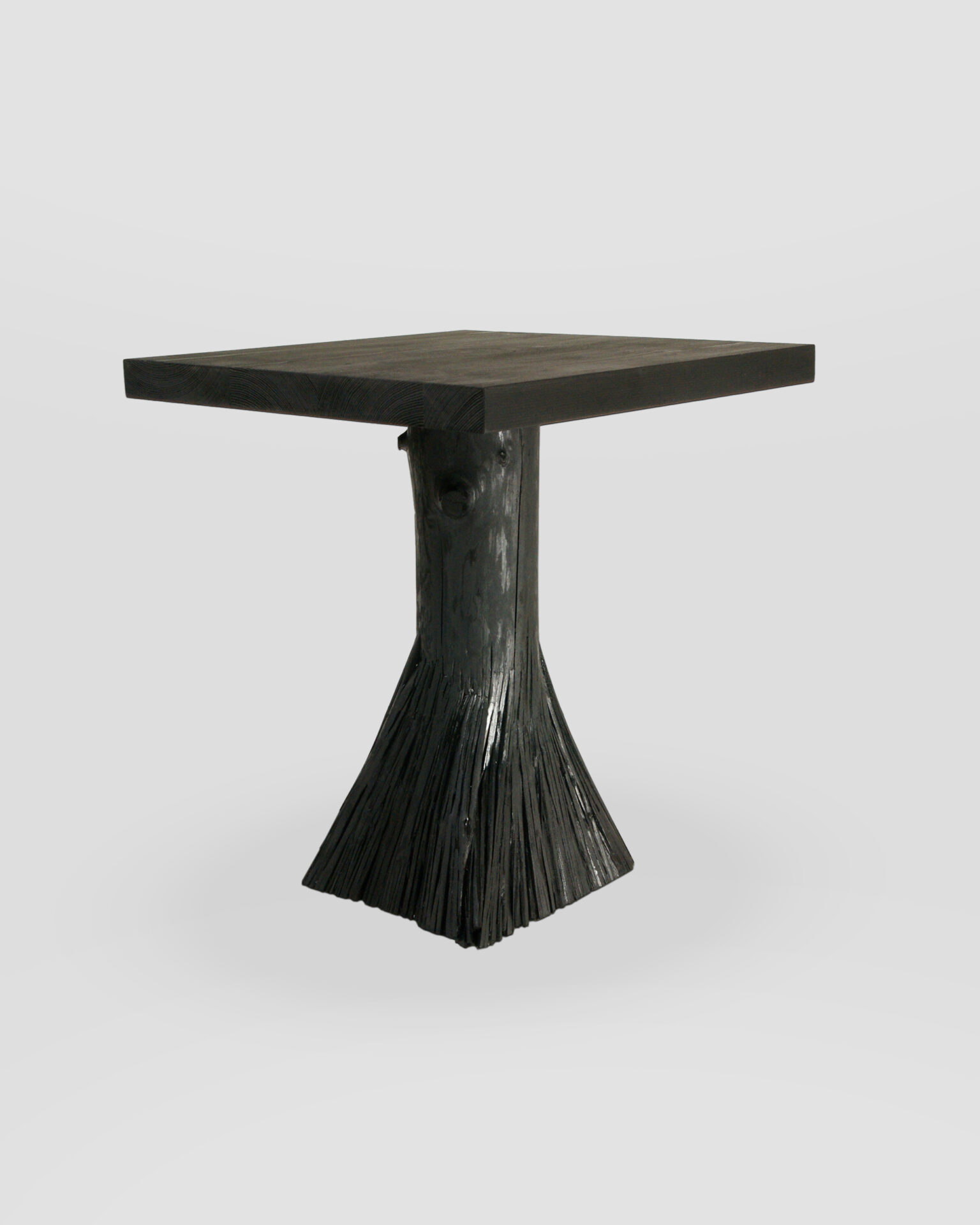
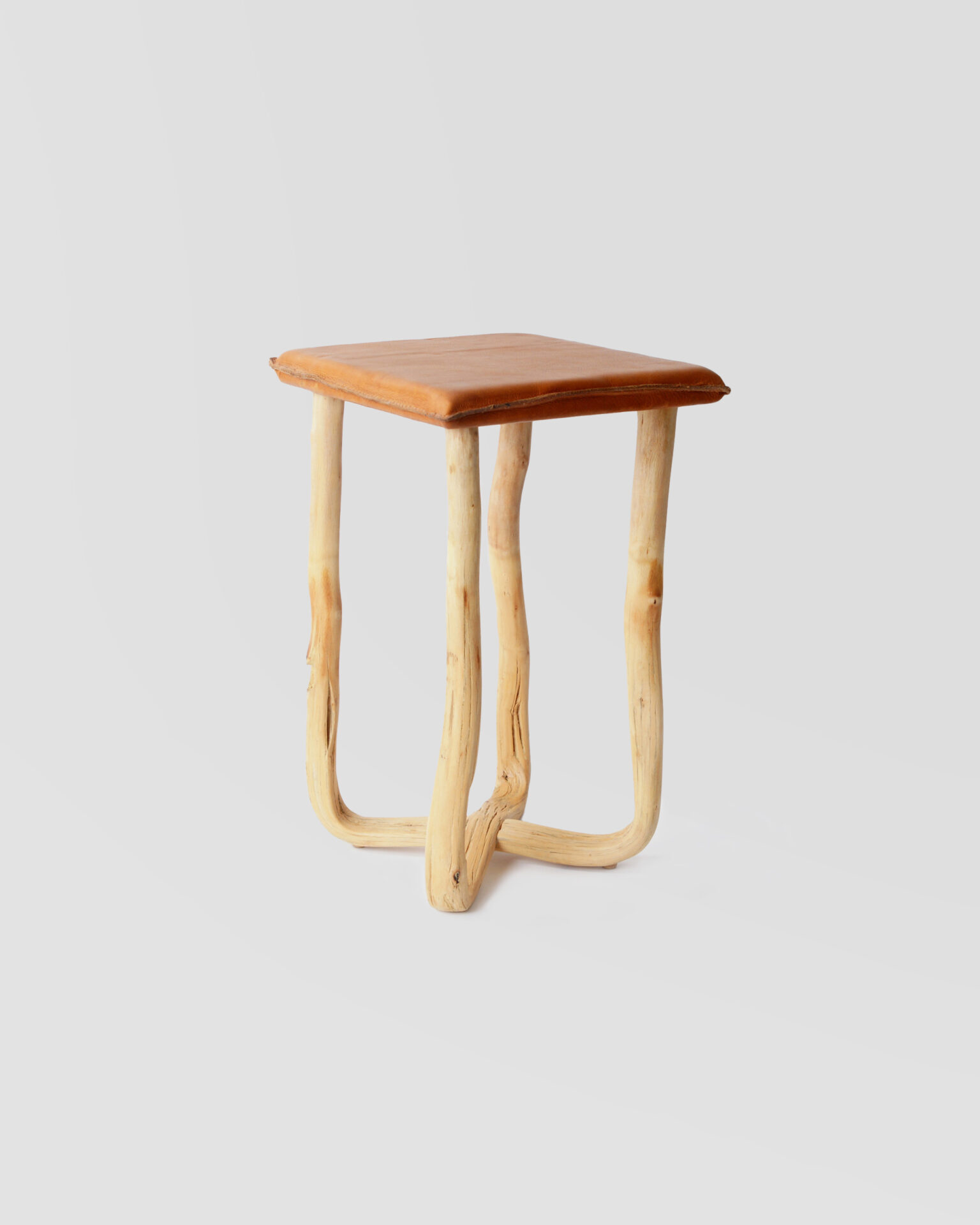
Having adapted the principles of wood-bending, Hemann has created something else entirely -a series of fluted wooden forms that are crafted from a single piece of wood that remains intact at the base but split into individual strands that fan outwards, like a flower in bloom. “By taking a much deeper look at the wood, I was fascinated to see that if you put pressure on really fresh wood then you can get these fibres out of it, and these fibres can then be moulded or shaped into objects. [Essentially] you are breaking the wood, but it’s still one piece.” The outcome of this process is intriguing, and it is unclear to what level the piece has been intentionally designed – what level of intervention was required to achieve this shape.
“It’s a different approach to ‘normal’ design where you are cutting things and putting different pieces together.”
As a designer, Johannes Hemann does not impose himself on his materials through the typical means – cutting, engineering, wrestling into submission – instead, he takes a more gentle approach, exerting an influence rather than executing a plan. There is an alchemy between maker, material and method, which Hemann taps into, working with great curiosity, intention and purpose. As he notes during our conversation, he is often, “Much more fascinated by the process and the material, by the journey toward the end result.”
